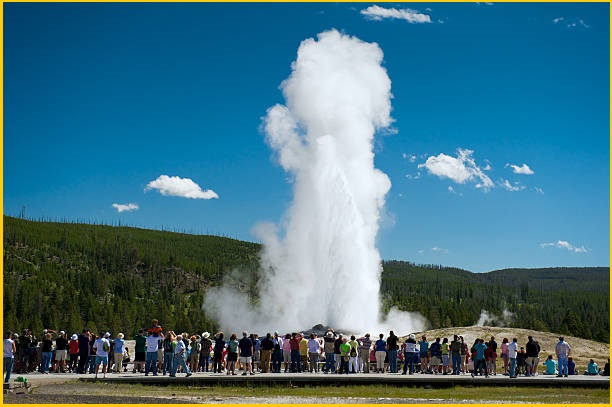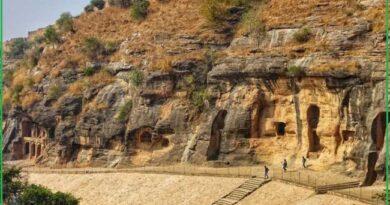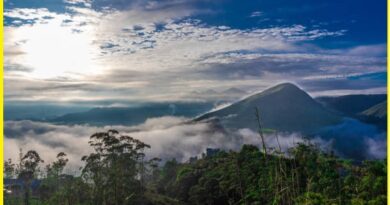Eruptions and Mysteries of Old Faithful Geyser
Old Faithful
Old Faithful is one of the most famous geysers in the world, located in Yellowstone National Park in Wyoming, USA. Named for its remarkably consistent eruptions, Old Faithful has captivated visitors for over a century. It erupts roughly every 90 minutes, shooting hot water and steam anywhere from 100 to 180 feet into the air. The duration and frequency of each eruption can vary slightly, but its predictability has earned it a special place among Yellowstone’s geothermal features.
Old Faithful is one of nearly 500 geysers in Yellowstone. Predicting geyser eruptions with regularity is rare, yet Old Faithful has lived up to its name, with its eruption intervals only lengthening by about 30 minutes over the past 30 years. Thermal features in Yellowstone are constantly changing, and it’s possible that Old Faithful may eventually stop erupting. Geysers and other thermal features reflect ongoing volcanic activity below the surface, and change is an inherent part of this natural system. Yellowstone preserves these geological processes, allowing visitors to experience and appreciate this dynamic landscape.
The water in Old Faithful is heated by the geothermal activity below, reaching up to 96°C. Each eruption releases thousands of gallons of water, creating a spectacular display that lasts from 1.5 to 5 minutes. Park rangers and scientists closely monitor the cycle between eruptions, using data from past eruptions to make fairly accurate predictions for visitors. Yellowstone itself sits atop a volcanic hotspot, which fuels the park’s extensive geothermal activity, including hot springs, mud pots, fumaroles, and geysers like Old Faithful.

Geology
The Greater Yellowstone Ecosystem’s landscape is the result of diverse geological processes over the past 150 million years. Over this time, Earth’s crust has been compressed, stretched, glaciated, eroded, and shaped by volcanic activity. These powerful forces have formed the mountains, canyons, and plateaus that make Yellowstone National Park a natural marvel.
Although these mountains and canyons may seem unchanged over a human lifetime, they remain incredibly dynamic and active. Yellowstone is home to some of Earth’s most active volcanic, hydrothermal (water + heat), and earthquake systems, making it an invaluable natural treasure. Yellowstone was designated the world’s first national park primarily due to its remarkable geysers, hot springs, mud pots, and steam vents, along with other wonders like the Grand Canyon of the Yellowstone River.
Also Read- The Last of the Giants: A Look at California’s Redwood Trees
The hills around Old Faithful and the Upper Geyser Basin are reminders of rhyolitic lava flows from the Quaternary period. These flows, which occurred long after the massive eruption 600,000 years ago, spread across the landscape like stiff mounds of bread dough due to their high silica content. Evidence of glacial activity is widespread here and plays a crucial role in the existence of geysers. Glacial till deposits beneath the geyser basins act as natural storage reservoirs for eruption water. Many features, like the Porcupine Hills north of Fountain Flats, are made up of glacial gravel, serving as reminders that this region was covered by ice as recently as 13,000 years ago.
Signs of erosion are visible throughout the area, from runoff channels etched into the geyser basins’ sinter deposits to the drainage system created by the Firehole River. Evidence of mountain building also appears as you travel south of Old Faithful toward Craig Pass, where the Rocky Mountains rise to 2,518 m, dividing the region into two separate watersheds.
Old Faithful isn’t the tallest or largest geyser in the park; those titles go to the more unpredictable Steamboat Geyser. Old Faithful’s reliability comes from the fact that it’s not connected to any other thermal features in the Upper Geyser Basin.
Upper Geyser Basin
Yellowstone holds nearly 60 percent of the world’s geysers, with the Upper Geyser Basin containing the highest concentration of these delicate features in the park. In this one-square-mile area, there are at least 150 hydrothermal marvels. Out of this impressive number, only five major geysers—Castle, Grand, Daisy, Riverside, and Old Faithful—are regularly predicted by the park’s naturalists. Visitors can also enjoy many frequent, smaller geysers along with numerous hot springs and a recently formed mudpot within this basin.
How Often Does Old Faithful Erupt
Old Faithful erupts roughly every 90 minutes, though intervals can range from about 60 to 110 minutes. Each eruption typically lasts between 1.5 and 5 minutes, with water and steam reaching heights of 100 to 180 feet. The frequency of eruptions can vary due to changes in geothermal activity, and park rangers use past data to predict each eruption time within a window of about 10 minutes. This predictability is rare among geysers, making Old Faithful one of Yellowstone’s most popular attractions.



